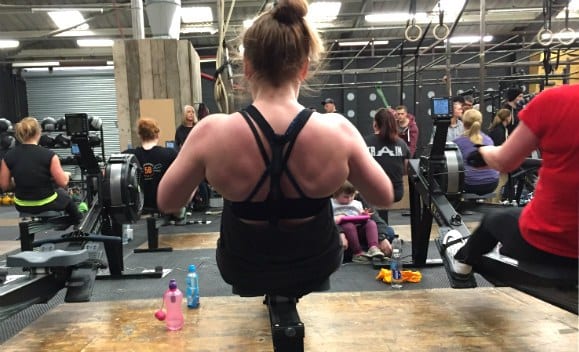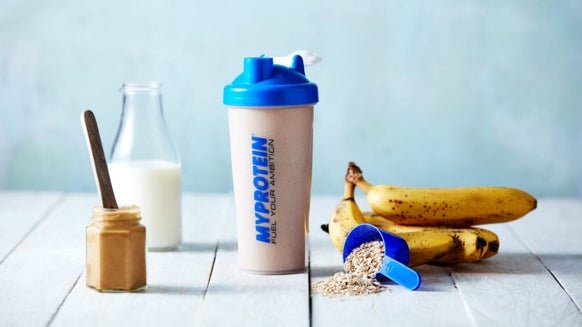
When training our backs, we all straight away think of the bigger movements like deadlifts and barbell rows, but we also have the all-important seated cable row, which can be key for building a well-defined back.
It’s part and parcel of most pull sessions, as it develops the back muscles very well, particularly the lats (latissimus dorsi) — the largest muscles in the upper body. It also targets the rhomboids, trapezius (traps), and your biceps, making the seated cable row the perfect exercise for any back workout.
How to do a seated cable row
So, once you’re at the machine, take a seat and attach the V-grip handle.
The V-grip handle enables you to have a neutral grip, ideal for the inner back muscles such as the rhomboids and mid-traps.
https://youtu.be/DlIuvYZ-XTM
1. Take a seat on the machine and bring your feet up to the footpad in front, with your knees bent. If the machine at your gym doesn’t have a footpad, simply keep your feet grounded.
2. Extend your arms and hold the handle, keep your shoulders back and keep your core tight, make sure your back doesn’t curl or arch over.
3. Now you're in position, bend your elbows and pull the weight towards your body, just under your chest. Don’t pull it up too high.
4. As you bring the handle towards your body, squeeze your lats and shoulder blades, holding the contraction by pausing for a second.
5. Slowly extend your arms to full extension, keeping your back straight throughout.
6. Repeat for your full set.
Variations and alternative exercises
1. One-arm dumbbell row:
Adding the one-arm dumbbell row into your workouts can help you develop a wider, thicker back.
Recommended Reps: 8-15 Recommended Sets: 3
https://youtu.be/KCywzCcVAXE
1. Stand next to a bench, holding a dumbbell in your right hand with your palm facing in.
2. Rest your left knee and left hand on the bench for support.
3. Bend forward, from the hips, so that your back is straight and parallel to the floor.
4. Pull your dumbbell up until your right elbow is pointing to the ceiling and your upper arm is parallel to the floor.
5. Lower the weight back down and repeat.
2.T-Bar Row:
This is another great exercise and potentially a dark horse for one of the most effective back exercises around.
Target Muscle(s): traps, rhomboids and latissimus dorsi (lats).
Recommended Reps: 8-15 Recommended Sets: 3
https://youtu.be/sGFT3OLe5PI
When performing the T-bar row, you recruit multiple muscles to help pull the weight toward your chest and to keep your lower back stable and supported. By pulling the weight toward your torso, you retract your shoulder blades and should really feel the squeeze.
1. Stand directly over the bar with it in-between your legs, and bend your hips and knees.
2. Grip the handle, which would be the “V handle” in this case, and pull the weight up towards your torso. Remember not to arch your back.
3. Lat Pulldown:
One of the original back-builders, and arguably the most popular, the lat pulldown has a justified reputation of helping to build a broader back.
Target Muscle(s): Latissimus dorsi (lats)
Recommended Reps: 8-15 Recommended Sets: 3
https://youtu.be/s1J9sh9yHjc
1. Make sure the wide-grip bar is attached. Adjust the knee support so your legs feel locked in.
2. Take a firm grip of the bar with your palms facing forwards (overhand grip). They should be wider than shoulder-width apart.
3. Lean back very slightly (approx. 20 degrees), lift your chest and keep your torso tight.
4. Pull the bar down to your upper chest, squeezing your shoulder blades together. Make sure your elbows move downwards and not backwards behind you.
5. Slowly release the weight back to the starting position, fully extending your arms and stretching your lats.
6. Repeat for your full set.
Take home message
The seated cable row is a great movement, so don’t overlook it in favour of deadlifts and barbell rows. It’s a vital exercise for back development which will really enhance your physique, and also benefit your other lifts, so remember to stay consistent.
Using variations and alternate exercises will help to keep your training interesting and see real progress. There are so many back exercises for you to do, so remember to keep changing it up over time.
Finally, take care of your back. Remember that form and weight are really important. Try to stick to rep ranges of 8-15, with strict form.

Dan Speakman is our editor and level 3 qualified Personal Trainer. Having spent time in Australia, he has experience in planning and delivering exercise plans to beginners and advanced athletes — both in the UK and down under.
Dan has also run successful weight-loss camps across the UK, alongside regular training seminars, covering all areas of gym-based training. He also runs weekly fitness boot camps and spin classes.
When he’s not working, or in the gym, Dan enjoys travelling to sunnier destinations, eating out, and trying exciting new foods.





